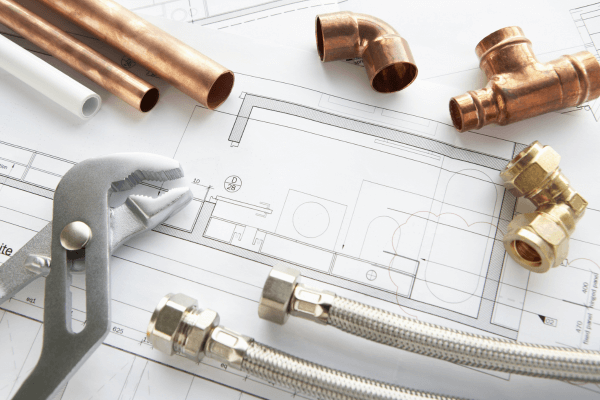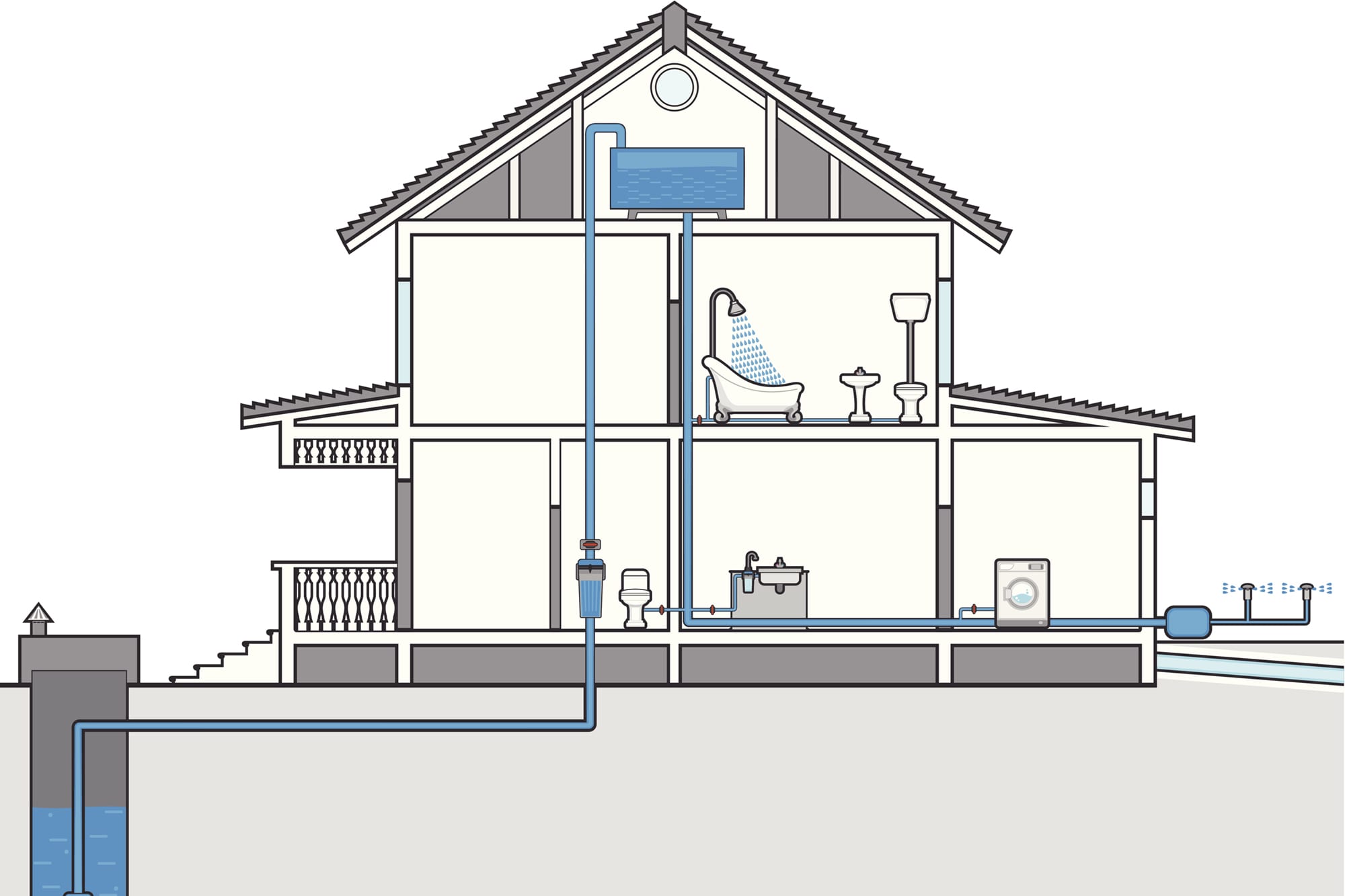Almost everyone seems to have their personal views on the subject of Exploring Your Homes Plumbing Anatomy.

Understanding exactly how your home's plumbing system works is vital for each property owner. From providing tidy water for alcohol consumption, cooking, and bathing to securely getting rid of wastewater, a well-maintained plumbing system is important for your family's health and wellness and convenience. In this comprehensive guide, we'll discover the detailed network that makes up your home's plumbing and deal ideas on maintenance, upgrades, and dealing with usual concerns.
Intro
Your home's pipes system is greater than simply a network of pipelines; it's a complicated system that ensures you have accessibility to tidy water and effective wastewater elimination. Recognizing its components and exactly how they collaborate can help you stop pricey fixings and make sure every little thing runs efficiently.
Basic Elements of a Plumbing System
Pipelines and Tubes
At the heart of your pipes system are the pipelines and tubing that carry water throughout your home. These can be constructed from various products such as copper, PVC, or PEX, each with its benefits in terms of sturdiness and cost-effectiveness.
Components: Sinks, Toilets, Showers, etc.
Components like sinks, toilets, showers, and bath tubs are where water is used in your home. Recognizing how these components attach to the plumbing system assists in detecting issues and intending upgrades.
Shutoffs and Shut-off Factors
Shutoffs control the circulation of water in your plumbing system. Shut-off shutoffs are important throughout emergencies or when you need to make repairs, permitting you to separate parts of the system without disrupting water flow to the entire home.
Water System
Key Water Line
The main water line connects your home to the local supply of water or an exclusive well. It's where water enters your home and is dispersed to numerous components.
Water Meter and Pressure Regulatory Authority
The water meter steps your water use, while a stress regulatory authority makes certain that water moves at a secure stress throughout your home's pipes system, protecting against damage to pipes and fixtures.
Cold Water vs. Hot Water Lines
Comprehending the distinction in between cold water lines, which provide water directly from the main, and hot water lines, which carry warmed water from the water heater, assists in troubleshooting and preparing for upgrades.
Drain System
Drain Pipes Pipeline and Traps
Drain pipes bring wastewater far from sinks, showers, and toilets to the sewer or sewage-disposal tank. Catches stop drain gases from entering your home and likewise trap debris that could trigger clogs.
Ventilation Pipelines
Ventilation pipelines allow air into the water drainage system, preventing suction that could slow drainage and cause traps to empty. Appropriate air flow is crucial for keeping the honesty of your plumbing system.
Relevance of Correct Drainage
Making certain appropriate drain protects against back-ups and water damages. Routinely cleaning drains pipes and preserving catches can protect against costly repair work and prolong the life of your pipes system.
Water Heater
Kinds Of Hot Water Heater
Water heaters can be tankless or conventional tank-style. Tankless heating systems warmth water as needed, while storage tanks keep warmed water for instant usage.
Just How Water Heaters Link to the Plumbing System
Comprehending just how hot water heater link to both the cold water supply and hot water distribution lines helps in detecting problems like insufficient hot water or leakages.
Upkeep Tips for Water Heaters
Consistently flushing your water heater to eliminate sediment, inspecting the temperature settings, and checking for leakages can prolong its life expectancy and improve energy efficiency.
Typical Plumbing Concerns
Leakages and Their Causes
Leakages can occur because of maturing pipelines, loose fittings, or high water pressure. Resolving leaks promptly protects against water damage and mold and mildew growth.
Clogs and Clogs
Blockages in drains and bathrooms are typically caused by purging non-flushable products or a buildup of grease and hair. Making use of drainpipe screens and bearing in mind what decreases your drains can stop blockages.
Signs of Pipes Troubles to Look For
Low water stress, sluggish drains pipes, foul odors, or abnormally high water costs are indicators of possible plumbing issues that should be resolved quickly.
Pipes Maintenance Tips
Regular Examinations and Checks
Set up annual pipes evaluations to capture issues early. Seek signs of leakages, rust, or mineral build-up in faucets and showerheads.
Do It Yourself Maintenance Tasks
Simple tasks like cleansing tap aerators, checking for commode leaks making use of dye tablet computers, or protecting revealed pipes in cold climates can stop major pipes concerns.
When to Call a Specialist Plumbing Technician
Know when a plumbing issue calls for professional experience. Trying complex fixings without proper knowledge can result in more damages and higher fixing prices.
Updating Your Plumbing System
Factors for Updating
Upgrading to water-efficient fixtures or changing old pipelines can boost water high quality, minimize water bills, and boost the value of your home.
Modern Plumbing Technologies and Their Benefits
Discover innovations like smart leakage detectors, water-saving toilets, and energy-efficient water heaters that can conserve cash and lower environmental influence.
Cost Factors To Consider and ROI
Compute the upfront expenses versus lasting cost savings when thinking about pipes upgrades. Many upgrades pay for themselves via lowered utility expenses and less repair services.
Ecological Effect and Preservation
Water-Saving Fixtures and Home Appliances
Mounting low-flow taps, showerheads, and toilets can substantially minimize water usage without compromising performance.
Tips for Reducing Water Use
Basic habits like repairing leakages without delay, taking much shorter showers, and running full lots of laundry and meals can preserve water and reduced your energy bills.
Eco-Friendly Plumbing Options
Think about lasting plumbing products like bamboo for flooring, which is durable and eco-friendly, or recycled glass for counter tops.
Emergency situation Preparedness
Steps to Take Throughout a Pipes Emergency situation
Know where your shut-off valves are located and how to shut off the water in case of a burst pipe or significant leakage.
Value of Having Emergency Situation Calls Helpful
Maintain get in touch with info for regional plumbing professionals or emergency situation solutions conveniently offered for fast action throughout a plumbing dilemma.
Do It Yourself Emergency Fixes (When Appropriate).
Temporary solutions like utilizing duct tape to patch a leaking pipe or placing a bucket under a dripping faucet can reduce damage until a professional plumbing professional gets here.
Verdict.
Understanding the makeup of your home's plumbing system encourages you to preserve it effectively, saving time and money on fixings. By complying with regular upkeep routines and remaining notified about modern-day pipes technologies, you can ensure your plumbing system runs effectively for years ahead.
Understanding Your Home Plumbing System: A Comprehensive Guide
Plumbing System: The Lifeline of Your Home
At its core, the plumbing system is designed to perform two primary functions: bring fresh water into your home and remove wastewater. The system is a network of pipes, fixtures, and other components that transport water and sewage. Residential plumbing systems include potable water supply lines, drain-waste-vent (DWV) systems, and various plumbing fixtures that make water use in daily tasks possible.
Key Components:
Water Supply: This part of your plumbing system brings municipal water into your home, passing through the main water supply line. It s responsible for supplying all water needs, from drinking to bathing.
Drainage System: It carries waste and water away from your home to the sewer or septic system. This system includes all the piping within your home that leads to external sewage or septic systems.
Vent System: An essential yet often overlooked component, the vent system allows sewer gases to escape and lets air into the drainpipes, ensuring water and waste move correctly through the system.
Fixture: More Than Just Taps and Toilets
Plumbing fixtures are the most interactive parts of the plumbing system, including faucets, showers, toilets, and sinks. Each fixture is connected to the plumbing system and plays a role in either the delivery of freshwater or the disposal of waste and wastewater.
Types of Fixtures:
Faucets and Sinks: Used for washing hands, dishes, and other daily water needs.
Toilets: Dispose of human waste through the sewage system.
Bathtubs and Showers: Provide bathing facilities, requiring both hot and cold water supply.
Water Supply: The Source of Life
The water supply system is a critical component, ensuring that potable water is available throughout your home for various uses, including drinking, cooking, and cleaning. This system consists of pipes that distribute water to different parts of the house, controlled by valves to regulate the water flow.
Types of Plumbing: Materials and Methods
Various types of plumbing systems and materials are used in residential settings, each with its advantages and applications. From copper and PVC pipes for water supply to cast iron and ABS for drainage, the choice of materials can impact the longevity and efficiency of your plumbing system.
https://intownplumbingtx.com/articles/home-plumbing-system-guide/

Understanding Your Home Plumbing System: A Comprehensive Guide
Plumbing System: The Lifeline of Your Home
At its core, the plumbing system is designed to perform two primary functions: bring fresh water into your home and remove wastewater. The system is a network of pipes, fixtures, and other components that transport water and sewage. Residential plumbing systems include potable water supply lines, drain-waste-vent (DWV) systems, and various plumbing fixtures that make water use in daily tasks possible.
Key Components:
Water Supply: This part of your plumbing system brings municipal water into your home, passing through the main water supply line. It s responsible for supplying all water needs, from drinking to bathing.
Drainage System: It carries waste and water away from your home to the sewer or septic system. This system includes all the piping within your home that leads to external sewage or septic systems.
Vent System: An essential yet often overlooked component, the vent system allows sewer gases to escape and lets air into the drainpipes, ensuring water and waste move correctly through the system.
Fixture: More Than Just Taps and Toilets
Plumbing fixtures are the most interactive parts of the plumbing system, including faucets, showers, toilets, and sinks. Each fixture is connected to the plumbing system and plays a role in either the delivery of freshwater or the disposal of waste and wastewater.
Types of Fixtures:
Water Supply: The Source of Life
The water supply system is a critical component, ensuring that potable water is available throughout your home for various uses, including drinking, cooking, and cleaning. This system consists of pipes that distribute water to different parts of the house, controlled by valves to regulate the water flow.
Types of Plumbing: Materials and Methods
Various types of plumbing systems and materials are used in residential settings, each with its advantages and applications. From copper and PVC pipes for water supply to cast iron and ABS for drainage, the choice of materials can impact the longevity and efficiency of your plumbing system.
https://intownplumbingtx.com/articles/home-plumbing-system-guide/
Hopefully you enjoyed reading our post about Exploring Your Homes Plumbing Anatomy. Thanks so much for spending some time to browse our content. Sharing is nice. Helping people is fun. We thank you for reading our article about The Inner Workings of Your Home's Plumbing.
Go Company